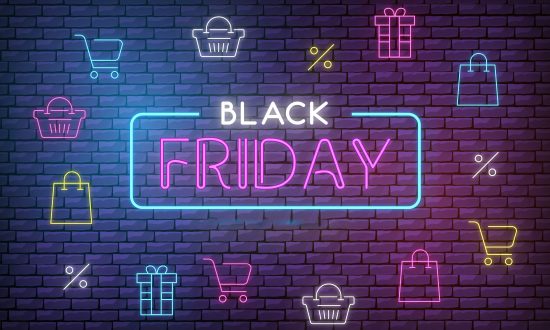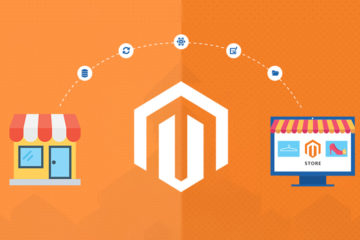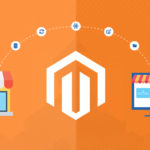The arrival of Magento 2 has left many storekeepers and developers pondering about the effect…
It’s time to begin thinking about sales and marketing from a different perspective. Customers’ preferences and choices are continually changing, but the strategies of many companies are not.
Honestly, many traditional techniques of sales and marketing are not serving anything anymore. The average person gets over 2,000 outbound retailing interruptions daily, out of which the most are either blocked or ignored.
Switching to inbound marketing will allow qualified customers and leads to come directly to your store, rather than the other way around.
Inbound vs Outbound Sales
The relationship between a buyer and a seller has evolved during the past decade. Several individuals now connect traditional sales with many elements of deception, resulting in a common lack of trust.
eCommerce is growing at a faster past and is easily accessible from different devices. As an outcome of this abundance of available information online, today’s buyers are even more aware than ever before.
In this blog, we will break down inbound and outbound sales so that you can achieve the correct balance for your business.
The Outbound Sales Method
The method of outbound sales is also known as traditional sales that revolve around companies getting leads and consumers. Outbound techniques incorporate:
- Cold calling
- Email blasts
- Expensive print advertising
- Business or trade shows
- Television ads
Outbound sales can be quite expensive for companies bearing less effective results due to the technologies created to block spam emails and identify caller ID. Instead of adapting to the new modifications, several businesses continue to try these same techniques resulting in losing both customers and money.
Rather than getting overwhelmed by the continuously changing customer, we suggest adapting and using inbound sales techniques.
The Inbound Sales Method
The method of Inbound sales is human, holistic, and human. Inbound marketing tactics enable you to connect with your consumers and gain consideration of the empowered shopper. If used accurately, these methods bring qualified customers straight to your company, sparing you both time and money.
The basic approach of inbound sales concentrates on elevating the overall customer experience that your business provides (both potential and current customers).
To help you gather a more comprehensive understanding of the sales methodology, we’re breaking down it into four phases:
- The Identify Phase
- The Connect Phase
- The Explore Phase
- The Advise Phase
1) The Identify Phase
The phase where you’ll separate passive customers from active customers.
Active customers are buyers who have already started their purchasing journey. They’re scanning for a solution to a particular issue and may instantly gain from the product or service that you are offering. From there, you can register them as qualified leads and get in their touch anywhere in their buyer’s journey.
Passive customers are buyers who are not currently willing to make an order but may be interested in making one in the future. Though marketers usually prioritize active users over passive users, it is likely to get passive customers to convert into active ones – even though it may demand a bit more extra effort.
Social media is an excellent tool to utilize during this phase as it will enable you to collect data about a potential customer that you could not reach earlier.
2) The Connect Phase
After recognizing the right kind of customer, you reach in the connect phase. Its stage is a significant part of the inbound sales strategy as it is all about establishing a relationship with a possible client.
We suggest starting this phase with a personalized message, showing that you understand the context of the buyer. By exhibiting your capability to listen and comprehend a user’s current problem, they will start to develop a sense of faith and reliability with your brand.
3) The Explore Phase
Once you create a connection between your company and the customer, you can make a smooth transition into the explore phase. The purpose of this step is to obtain a comprehensive understanding of the needs of a customer through an in-depth and mindful conversation with expert consultation.
By interacting directly with the buyer, you will get a better understanding of their overall intentions.
4) The Advise Phase
After going through all the previously stated phases of identifying your buyer and building a relationship with them based upon their needs, you enter into the fourth and the last stage. At this point in the inbound tactics, you have to give a presentation that puts light on all of the prominent elements of your company.
However, unlike outbound sales, this should not be a generic selling pitch that could be provided to any buyer. Rather than this is a presentation that is tailored, especially for the client. Share the particular ways your product or service will serve them to achieve the ends they mentioned to you during the explore phase.
Finding the Correct Balance for Your Business
Even though we’re big advocates of inbound sales and the significant profits it offers to a company, we also understand that inbound and outbound work collectively to create a holistic approach.
Attaining the correct balance between inbound and outbound methods and the tactics that are currently working in favor of your business is an essential component of building a successful eCommerce marketing strategy.
If you’ve received exceptional reviews and a high ROI on a smart television advertisement, use that to your benefit by taking it to the inbound level. This step will help to grow engagement and improve sales.
Add a relevant hashtag to your ads to encourage viewers to associate with you on different platforms. It will enable you to utilize your current campaigns while also learning to recognize qualified, inbound leads.
Getting the right balance between your current strategy and the inbound methodology will enable your business to make a seamless transition towards a smarter way of trading.
Summing-up
The inbound sales tactics have designed a new type of buyer-seller relationship, the one that works on trust and thrives on communication. By recognizing and associating with active users and your targeted audience, you’ll save your time and funds while simultaneously forming a lasting relationship.
If you have any inquiries about inbound-outbound sales or you would like to know how Axtrics can help you improve your inbound marketing strategy, reach us through the comment section below. Our team of specialists will be in touch!














Leave a Reply